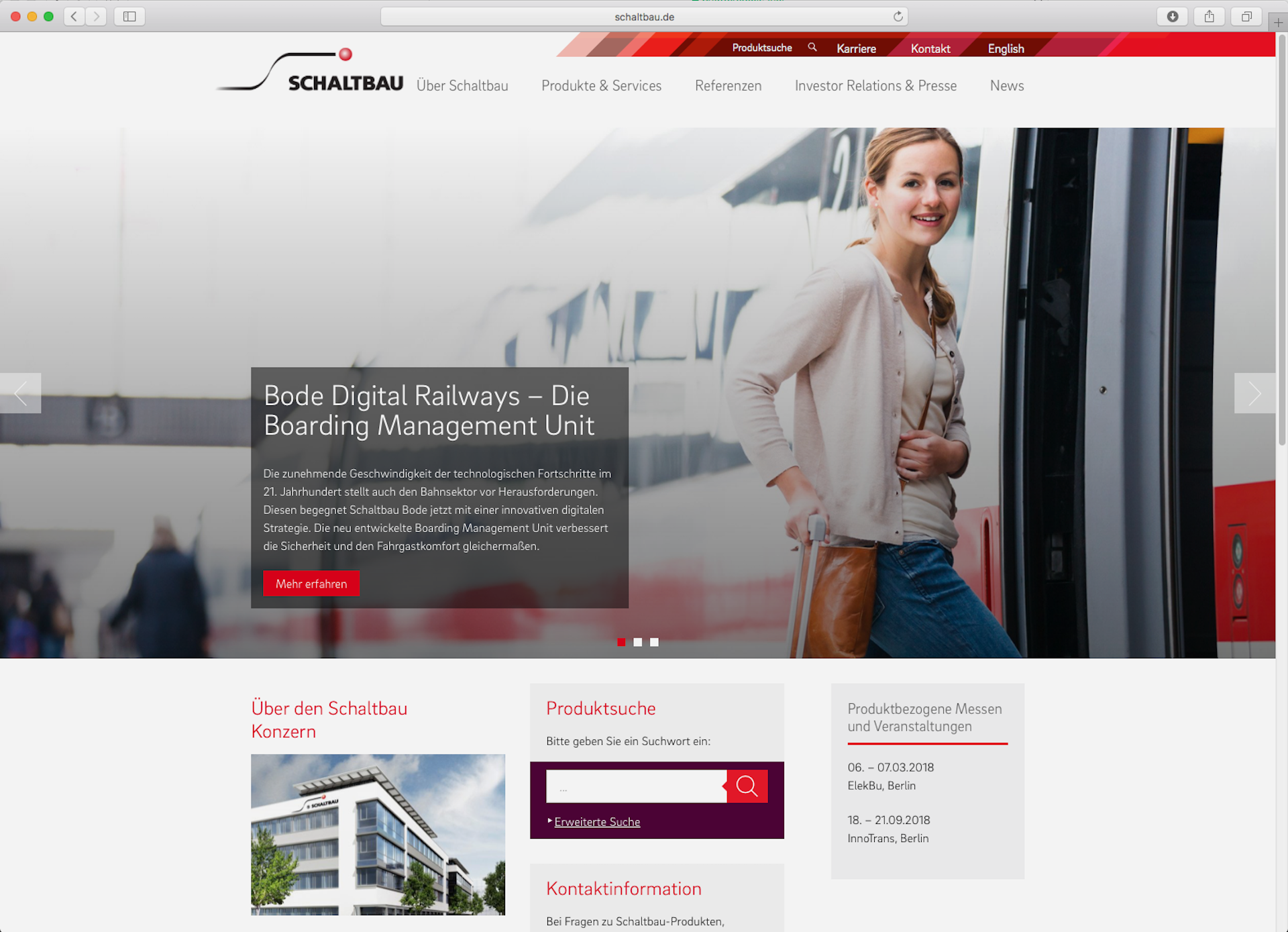Digital touching points for your brand
Websites no longer serve the purpose of extending the business card, the digital space is becoming more and more the place for high-performance brand images.
- Every second access to web pages comes from mobile devices, and the trend is rising. This means that pages must not only be tailored to desktop computers or laptops but must be adapted to a wide variety of devices, from mobile phones to stationary computers. This is not only the key to usability, but also has tangible benefits: Google, for example, ranks pages that are not optimized for mobile devices lower.
- The greatly increased use of mobile devices also means that surfing behaviour has changed: Website visits are longer, and scrolling is self-evident and no longer an annoyance. The important contents do not have to lie completely above the so-called page fold, the immediately visible area of the screen.
- A robust content management system allows companies to maintain and extend their websites themselves (instead of having to hire an agency or programmer for every change). This system should be easy to use and always meet the latest security standards, such as automatic security updates.
- Search Engine Optimization (SEO), must already be taken into account when designing a website. It influences the performance of the site, that is its findability and ranking. There is no miracle cure for SEO. What really matters is meaningful and relevant content. Other proven tools include cross-links, meta tags, and XML sitemaps.
Conversion is not a brand goal
Before even one pixel for the website is created, one thing must be clear: What is the goal? A high conversion rate, which means many clicks on the product that lead to the actual purchase. Information about products? Building a specific image? Structure, content and priorities change depending on what you want to achieve. Here are a few selected examples of the translation of a brand strategy into the digital space:
Schaltbau AG

Schaltbau AG had united six corporate groups; that should also find expression in a common web portal. For this purpose, the product portfolio was first harmonised and a uniform brand understanding was created throughout the company. The goals were image formation and presentation of the extensive product portfolio as well as information for shareholders.
Schleifring

The leader in transmission technologies competes with other companies in its industry for the best candidates.
The new website represents Schleifring as a modern company and thus, helps to maintain its image. It also focuses on the career portal with information on employers and regional characteristics.
cmdctrl

The leading trade fair in the field of Cyber Security launched a completely new exhibition concept with INTO Branding. Their online presence was to be parallel to the digital meeting place for top-level decision-makers in the industry and should open the door to both, exhibitors and participants.
An intuitive navigation ensures that information is easy to find. The modern design, in turn, reflects IT, without clichés in many ways.
Who How What on the WWW

With structured cooperation and a clearly defined process, we ensure that your website is online as quickly as possible:
With a structured collaboration and a clearly defined process, we ensure that your internet presence is online as fast as possible:
The basis is a detailed briefing or a web workshop in which structure and contents are worked out. After that, we usually create so-called wireframes, which are the starting point for the first prototypes in a test environment. Then, we get to work: we write, design, and program. For the content, we consult journalists and photographers in agreement with you.
We program on all common platforms, can integrate content management systems and set up complex product configurators – depending on what makes sense for your brand and what has been decided.
The result of each of these steps is aligned with the brand platform to ensure consistent and relevant communication.




